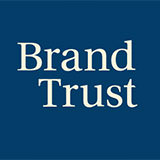
Nespresso has its own, distinct brand style and high quality standards. The coffee capsule supplier should keep focusing on this.
How strong is the brand Nespresso?
Article
9. August 2013 ▪ Reading time: approx. 4:00 min.
The economic media are describing it in vivid terms: They predict a » "war in the capsule market". Understandably so, because Senseo and Mondelez are mobilizing to conquer the highly profitable coffee capsule market, which is worth $8bn worldwide and grew by a whopping 16 percent in 2012 in Germany alone.
To date, the attractive market has belonged mostly to Nestlé and its brand Nespresso. The Swiss corporation created and developed the business with the coffee capsules. The famous "lock-in" system cinched their success: To use the Nespresso capsules, one needed special, comparatively affordable coffee makers that were designed specifically for these capsules.
Using other capsules was virtually impossible. But since an important Nestlé patent has expired, competitors are now also allowed to produce coffee capsules that fit into Nespresso machines. And, what is particularly interesting: » They are allowed to advertise it (Higher Regional Court of Düsseldorf).
Senseo and Mondelez (Jakobs, Carte Noir) want to sell their capsules for less and in grocery stores – Nestlé's brand, by contrast, is only available in their own boutiques and online. Is the impending competition endangering the brand Nespresso? To find an answer, we analyzed the brand strength of Nespresso and looked for ways to defend against the attack.
Nestlé's coffee brand is currently successful and strong, as several parameters indicate:
- huge sales growth of at least » 30% per year (2000-2006), most recently 16% to €2.9bn (2011)
- a profit margin speculated to be in the upper double-digits
- a price premium of more than 1000% over regular ground coffee – or between 20% and 30% over other capsule providers.
- a high » recommendation rate of 50%
But how sustainable is this success?
Nespresso's attractiveness is based on several peak performances
» Strong brands are created by continuously delivered peak performances. These crystallize into values over time and earn the consumer's trust. This is the foundation for a healthy relationship between brand and consumer, and prerequisite for profitable growth.
One of Nespresso's peak performances, in addition to excellent service and consulting, is their high quality standard, which permeates the entire value-added chain: from cultivation and strict selection of coffee beans, the roasting process, the packaging, all the way to specially designed machines with a technical innovation, the special high-pressure brewing process. The result – if the relevant blogs and forums can be believed – is outstanding coffee quality the competition has not been able to touch.
Nespresso has maintained this high quality standard until today, so it could evolve into an important brand value: Perfection, which is also reflected in the brand positioning "perfect espresso". This important value makes the brand resilient in face of the competition – and it will protect it in the future, if it continues to be nurtured.
A clear style makes a brand attractive – Nespresso shows how it's done
Strong brands are recognized by their clear style that illustrates the brand character. The » brand style elements of the Nespresso brand are unambiguous and assertive:
The brand's own language: Instead of the usual technical designations, Nespresso uses terms like "Grand Cru" or "Late Harvest"; you go to a Nespresso boutique rather than a shop: The analogies from the world of wine and luxury goods show the premium quality standard, the rule breaks stir curiosity.
The Form: Nespresso uses the stylized square – visible in the logo, the shape of the package, the arrangement of packages in the boutique.
The color: The Nespresso brown is applied consistently throughout the brand world: from packaging to shopping bag, from the interior design of the boutique to the classic communication.
The strong design orientation: It transports the brand value "sense of style" to the outside – from the colorful capsules and stylish espresso machines to the Art-Deco boutique design: the Nespresso style is immediately recognized.
The use of "senses": Shopping at the Nespresso boutique becomes a sensual experience, the shopper is immersed in the elegant lifestyle world and able to feel, see, smell, and taste the brand.
The brand Nespresso also has very high style consistency, which, though some details may be copied by the competition, taken together makes the brand unique.
Nespresso has a high recommendation rate
When it comes to buying decisions, recommendations are more relevant than ad campaigns. Not even George Clooney can change that, although he certainly did contribute to Nespresso's success as its "Brand Ambassador". The brand's ability to activate recommendations comes mostly from the consistently delivered peak performances, coupled with high style consistency. It is reflected in the high recommendation rate: » 50% of Nespresso Club members come from the "family & friends" environment.
The brand Nespresso grows from the inside out
An essential success factor is the Nespresso Club, which Nespresso used to make customers into brand ambassadors long before the Clooney campaign. Coffee enthusiasts and lifestyle fans enjoy the feeling of exclusivity and appreciation that comes from direct contact with the brand. This approach to » brand development is common in the luxury sector, but in the coffee business, it was unique at the time.
With the Club, Nestlé laid an important foundation for growth. In 2000, the Nespresso Club had 600,000 members worldwide; ten years later that number had grown to an impressive ten million. The development confirms a thesis: Strong brands grow from the inside out. The club is valuable brand capital which Nestlé built for the long term and which now represents a huge competitive advantage over the competition.
Strong brands polarize – not everyone loves Nespresso
The coffee capsule culture certainly has its opponents: They criticize the high use of aluminum, the recycling problems, or the luxurious style of the Nespresso world. But rejection is not a blemish, because strong brands polarize, precisely because of their sharp profiles. And the sharper it is, the more likely are counter reactions.
Of course brand managers must monitor these reactions consistently. The brand leaders of Nespresso should for instance consider the "sustainability" issue and react appropriately – without bending too far and violating the brand value system.
Conclusion: Nespresso's brand battery is fully charged
The brand Nespresso is currently in a strong position: It was honed over more than 12 years through very consistent » brand management. It benefits from peak performances and extreme consistent style. Nespresso is the "original" and sets the bar for all competitors to beat. The brand reservoir – like a battery – is fully charged.
The challenge faced by a successful brand like Nespresso lies in further increasing this attractiveness – the battery must be recharged over and over again. These principles could serve as an action recommendation:
Maintain the quality standard at all levels: from product to brand experience, from machine to service. The price should remain untouchable despite the competition.
Keep practicing the principle of breaking rules in order to surprise.
Continue to develop the brand style in a self-similar way – style consistency is money.
Continue to develop fan relationships and loyalty. They are an enormous brand capital and strategic competitive edge.
Keep the exclusive distribution model – no expansion into retail.
Or, to put it another way: If the brand Nespresso stays true to itself, it is well equipped to face the rising competition.













